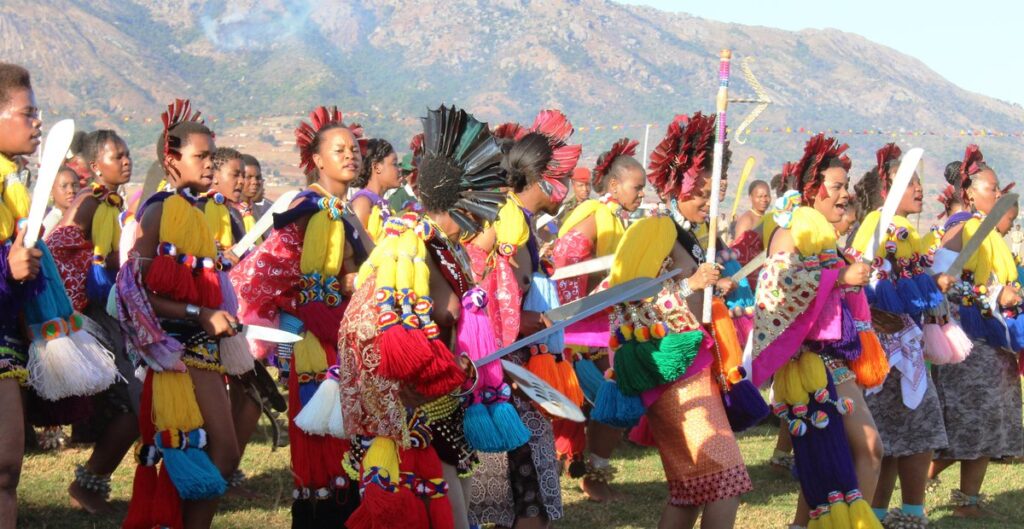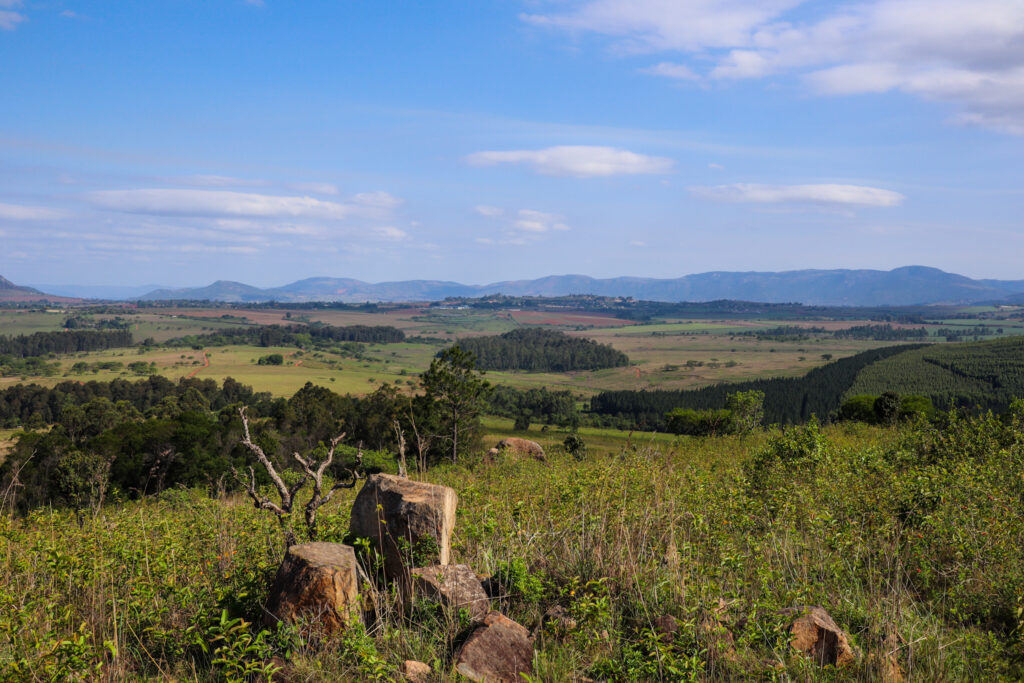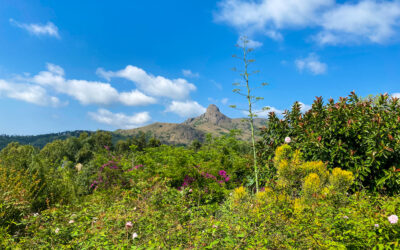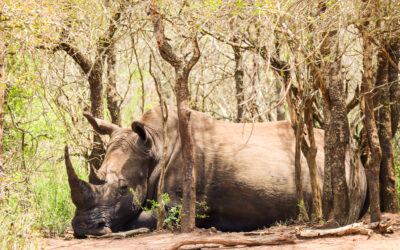Eswatini is one of seven countries in the world that still maintains a regime of absolute monarchy. In fact, it is one of the oldest monarchies in history, and one of the few African countries that, once independent of the colonizers, maintained the same political system as before. In Eswatini, almost 90% of the population is Swazi, and surely this ethnic and tribal homogenization has helped keep this political system that is still in place alive.
The monarchy in Eswatini is different from what we can understand in Spain. Here, the king is chosen, that is, the kingdom does not pass from generation to generation. When the current king dies, a provisional government is formed and a council of sages meets to choose the future king from among all the Swazi people. To choose, look for a person with 100% Swazi blood; that is, their ancestors were originally from Eswatini. Besides, they value that he also has royal ancestry. With a polygamous culture and where the current king has more than 20 women, it is easy to find someone with royal blood in the country. Therefore, in Eswatini it is said that the new king is already alive, because he is in the country but no one will know who he is yet.
Another of the different facts that Eswatini has with the Spanish monarchy is the role of the queen. The queen is not the king’s wife; but the queen, who is one of the most important figures in this absolute monarchy, is the mother of the present king. All decisions are made with the approval of the Queen, and she is the most important person in the entire kingdom.
As for religion, it is said that in the early 20th century, a missionary cured Queen Regent Labotsibeni of partial blindness. This caused this queen to be a staunch supporter of the spread of Christianity in the country, which was mixed with different local beliefs.That is why, today, any religion is welcome in the country, and therefore we find different beliefs, whether with God, ancestors, or the animal kingdom.
Culturally, two of the most important festivals in Eswatini are Umhlanga and Incwala. The first is a festival that usually takes place in late August, early September. Every year, on the last day of a six-day ceremony, about 20,000 virgin girls dance in front of the king and his mother. There, the king will choose which girl he likes best to be his future wife. Swazi culture is polygamous, and the king is said to have more than 25 wives, although the exact number is not known at all. The second, which takes place in late December, early January, tens of thousands of Swazi warriors gather to dance the history of the nation. So if you visit the country at any of these two times of the year, it can be very interesting to see some of these festivals that are very contradictory in our culture (especially the first, where virgin women are chosen by the king), but which for the Swazi people are part of their tradition.
The history of the country until its independence
The history of this country, like many other states in the area, stems from the San people, hunters – gatherers who occupied the present-day Eswatini for more than 20,000 years during the Stone Age. Centuries later, the first settlements of nomadic peoples began to form, incorporating cultural and linguistic features into the country. Some of the tribes spoke Sotho, others Thonga or others Nguni; and they absorbed the Bushman community as they began working in agriculture and settling in the country.
Around 1750, the Nkhosi-Diamini tribe, who spoke Nguni, entered the country. These fought all other tribal groups and for the next 100 years, they were expelled from the country.This powerful tribal group is rooted in what we know today as the Swazi culture; and around 1820 they began to implement a reign of kings with a highly centralized power structure. The Swazi kingdom included present-day Eswatini but also much of Mpumalanga province (South Africa).
A few years later, around 1840, Boers and the British began to arrive around Eswatini. The Swazi kingdom did not seek any conflict with these two groups. What’s more, they helped them get rid of small tribal groups that remained in the country. In fact, they even signed treaties with the Boers to help them control the kingdom, while the Swazis protected them from the Zulu kingdom, one of the most violent in South Africa. This caused Eswatini to lose much of its territory to the Boers, especially the Mpumalanga region. They also helped the British in various wars such as the one in eMshadza, in exchange for protecting the independence of the kingdom of Eswatini.
It was at this time that King Sobhuza I had a dream. He dreamed that strangers were coming carrying two things: a book and a disk. His ancestors told him to accept the book and reject the disk that is, to accept Christianity and reject money. Therefore, the king invited the Christian mission of the Wesleyans from Natal (South Africa) to come to the kingdom of Swaziland. Unfortunately, this king died before the arrival of the missionaries, who entered the country in 1844.They converted some premises, but also had some conflicts with the native population because they found them unattractive, with the color of the skin, as if it were cow’s milk.
By the 1880’s, many settlers arrived in the area attracted by the large amount of gold in the area.The Boers, seeing the great wealth in the Transvaal area, asked the British to let them build a road that crossed Eswatini to the east so that they could reach the sea. In return, the British made sure that the Boers did not expand north of the Limpopo River, leaving free-way to the occupation of present-day Zimbabwe. Thus, in 1894, the reign of Eswatini passed into the hands of the Boers. The promise to protect the British rule that the British had made years ago came to naught, despite protests from Queen Tibati Nkambule.The Boers chose Manzini, which was located near the royal peoples, such as the capital of the country.

With the start of the Boer-British War in 1899, most Boers left Eswatini to fight the British in South Africa. The control of the country by these settlers disappeared and we can say that if this war had not existed, surely today Eswatini would be another province of South Africa. The British won the war in 1902, and the kingdom of Swaziland came into their hands. However, they had little interest in developing this kingdom, and all they did was establish the country’s current borders and make the first census. At that time, there were 84,000 people in the country. In 1905, Eswatini became a protectorate where internal affairs were managed by the Swazi monarchy, thus forming a single national unit. The British chose Mbabane as the country’s capital because it was higher up and there was less risk of malaria.
The 1907 is a very important date in the history of the Swazi people. In that year, the British decided to divide the country into three parts: a third would be the white settlers; another third would be from the crown for commercial use, which meant that they could practically only sell it to whites; and the other third to be administered by the King of Eswatini. The Swazi people found this partition unfair, and for the next 50 years fought to reclaim all of the land.
During the reign of King Sobhuza II, which began in 1921, he sued the British court for the annulment of the distribution of land, which he considered totally unfair to his country. He lost the dispute, and since then, a very united and powerful feeling of the Swazi people against British oppressors has begun to be generated in the country. It was the time of the 1929 crackdown, and during the 1930s depression, many British settlers lost interest in the country. In 1938, the South African Boers asked the British Empire to incorporate Eswatini into their country, as the British had little to do there. The Swazis, however, were totally against it. They had already lived under the rule of the Boers, and many locals working in South Africa knew that if they came under the power of the Boers, the apartheid regime would also settle in the country.
The British ruled out giving the country to the Boers, and from the 1950s onwards they began to develop agricultural techniques to improve the country’s productivity. They built the first paved road between Manzini and Mbabane; the Ngwenya mine, which supplied 12,000,000 tons of iron to the British Empire, also began to explode; and with the help of the Americans, they created a railway line that crossed the country and reached Maputo.
During the 1960s, with the declarations of independence of various African colonies, King Sobhuza II began to encourage the locals to gain independence from England as well.The British, who wanted to establish a democratic system like the one they had in Westminster, decided to hold the first elections in 1967, where the party of King Sobhuza (Imbokodvo National Movement) won all the seats. Swaziland became an independent country on 6th of September, 1968, and King Sobhuza II decided in 1973 to re-establish the same political system that existed before the arrival of the first settlers: the absolute monarchy. This king ruled the country for forty-seven years after its independence (and throughout his reign, for 82 years!).

Eswatini today
In 2018, during the 50th anniversary of independence, King Mswati III decided to change the name of Swaziland (which in English means the land of the Swazis) to Eswatini (which also means the land of the Swazis in the local language). This is a way of completely erasing the colonial past of this country, which on becoming independent from the British returned to the system of absolute monarchy.
This system means that, in reality, the king has the political control of the country and decides who is the Prime Minister of the country. There are 73 seats in parliament in Eswatini. The king chooses 10 members; while 59 seats are chosen through ballots called the tinkhundla system, which allows local leaders to veto candidates and influence, in practice, the election results. If the female representation does not exceed 30%, then 4 additional seats with female representatives are chosen. Instead, in the senate, the king chooses 20 of the 30 members who are part of him. The rest is up to parliament. Therefore, in the senate which is where the laws are made and governed, the king controls more than 60%. In this way, absolute control of the country’s political system is ensured.
Today, Eswatini is one of the seven countries in the world that still maintains this absolute centralized power; but people are increasingly tired of the great inequalities and extreme economic differences that exist between the Swazi people and the country’s political and royal representatives. Since June 2021, many people in the Swazi people (especially young people organized through social media) have taken to the streets to say enough about this absolutist system. The king’s response has been based on bullets, bans on demonstrations and denial of any internal conflict. We, when we traveled around the country, found some people who asked us to explain to the world the situation of poverty and lack of rights that are living much of the Swazi population, where about 60% live below the threshold of the poverty. With the onset of the Covid pandemic, inequalities have been further exacerbated and protests seem unstoppable until there is a real shift to one of the absolute remaining monarchies in the world.















0 Comments